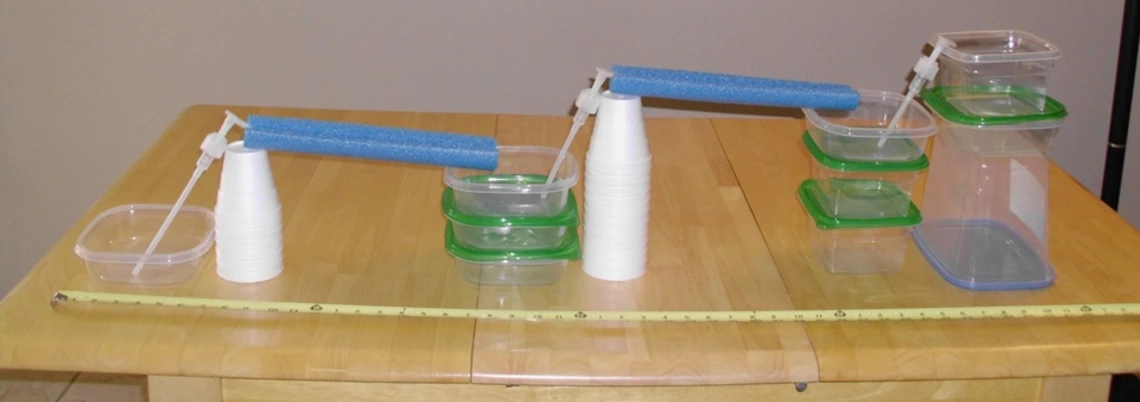An Energetic Engineering Challenge

In the heat of the summer, we can appreciate the extra energy used to help keep us cool, but have you ever thought about all the energy it takes to deliver water to our doorstep? What about all the infrastructure that directs the water to our homes and businesses? Most people don't give our water management systems a second thought. We turn on the tap and water seems to magically appear.
Educators from around Maricopa County got a better feel for the importance of Arizona's water management and supply systems in APW's Waters of Our World (WOW) Teachers Academy. As part of the curriculum unit, teachers were asked to employ the Engineering Design Process (EDP), as their students will be, in the construction of a scale model of the Central Arizona Project water delivery system.
Tasked with using items from their homes to create the model, which simulates pumping water uphill almost 3,000 feet in elevation over 336 miles, our homebound educators got very creative. Some used palm fronds as canals with sticks as support structures. Another person decided to add a culinary twist and used soup bowls as reservoirs and food boxes and cans as canal supports. Only in this design could celery have fulfilled the role of a canal!
Another designer made this a family project and worked with her daughter to create the BAP - Bethany's Arizona Project! Following the same criteria and constraints, the BAP model was created using plastic containers as reservoirs, cups as canal supports, and a spliced pool noodle as a canal. Most of the designs used lotion pumps as the mechanism to pump water uphill and all the engineering designs were thoughtfully created.
Participants quickly learned the importance of energy use in the CAP system. Regardless of whether you're working with a scale model or the real CAP system, pumping water uphill is very energy intensive and something we should all appreciate.

